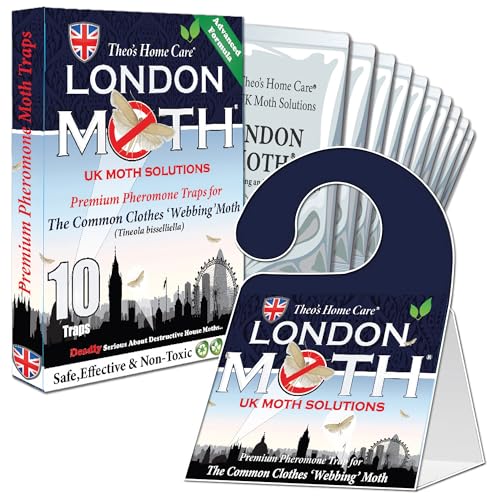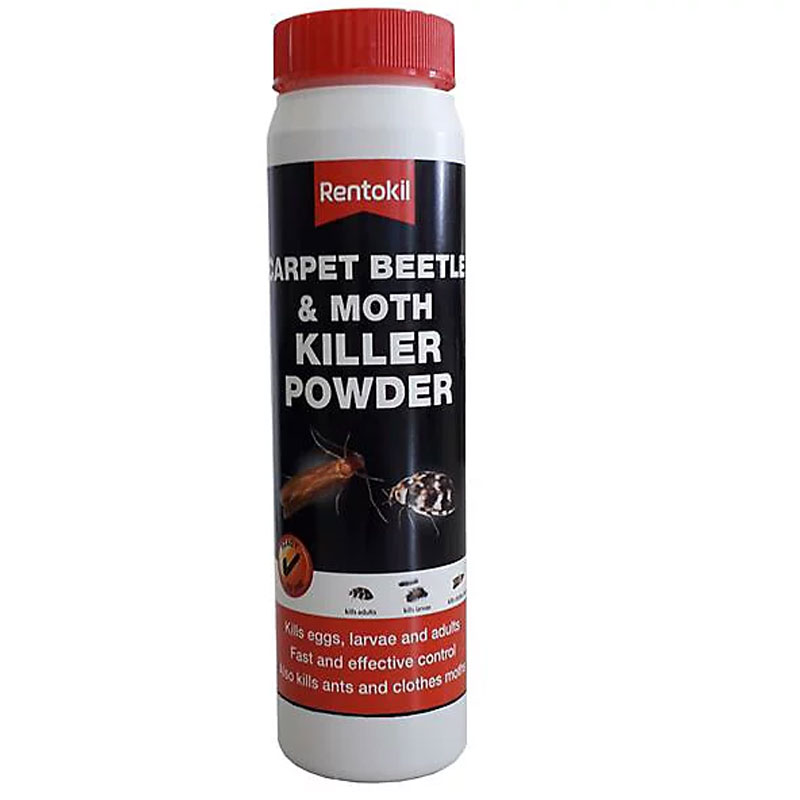How to get rid of carpet moths and stop them destroying your home
Knowing how to get rid of carpet moths is crucial if you want to stop these unwanted cloth-loving creatures from destroying your carpet. Here we tell you how.
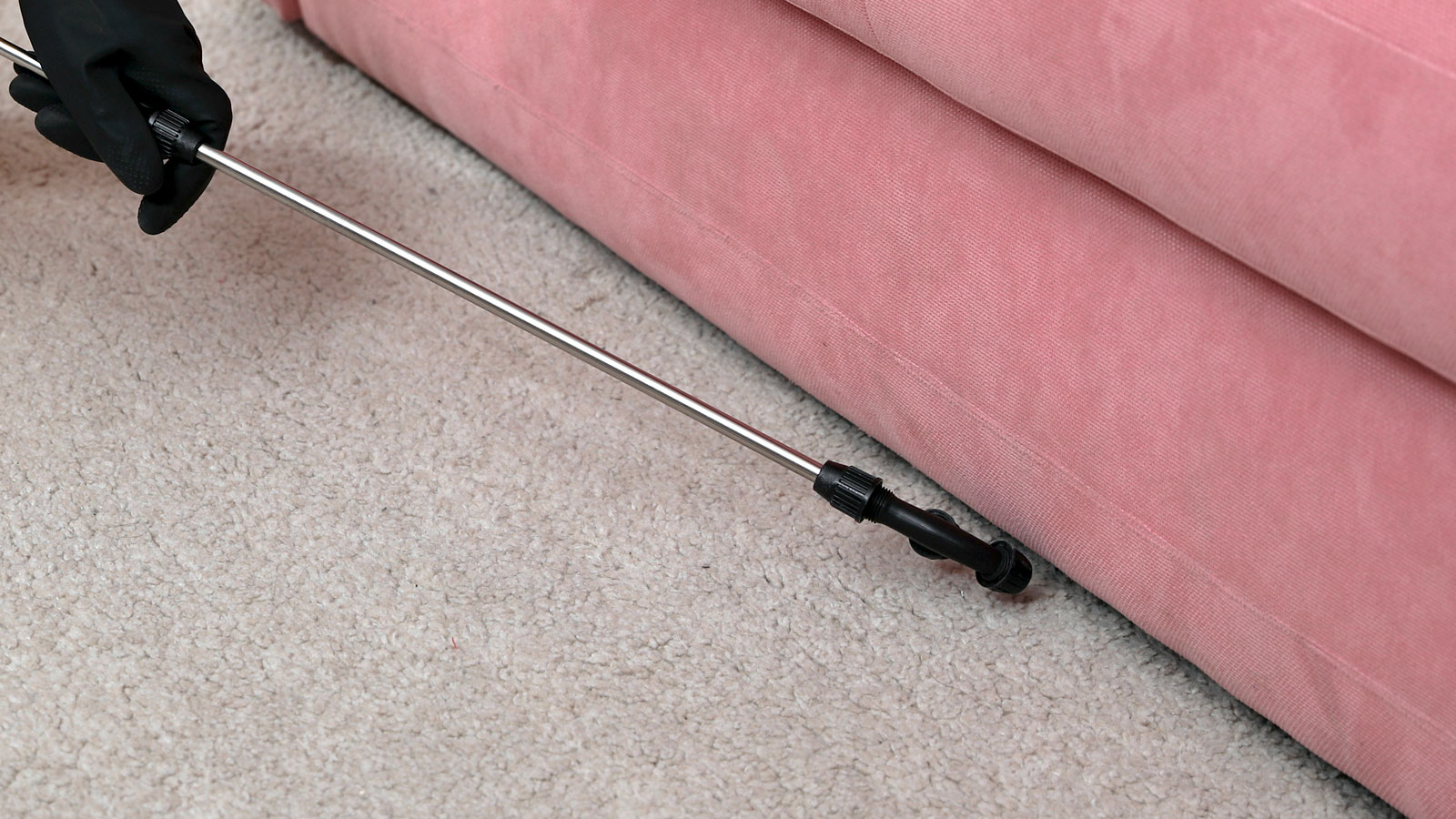
If your favourite flooring is being devoured by unwanted pests there is a good chance it's moths or beetles doing the damage. Here we look at how to get rid of carpet moths if they do invade your home, whatever type of carpet or rug you might have.
The first step is identifying them and what you need to be on the lookout for to help stop them taking over. And once you know what to look for, it's time to spring into action to kill them off for good.
And to make sure that they don’t come back, the experts offer up some smart advice on how to stop these irritating insects even getting a chance to start chomping away on your carpet.
Try these carpet moth killers to keep your carpet moth-free
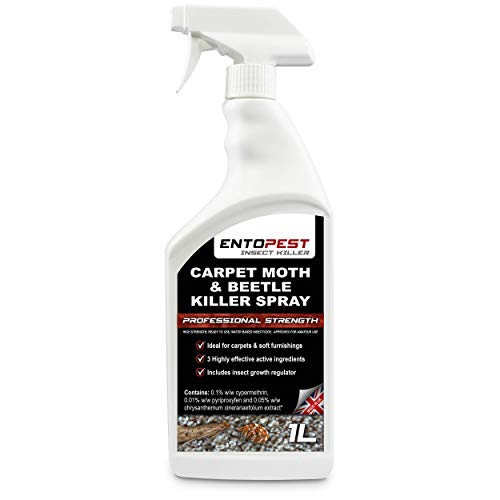
A ready-to-use specialist spray designed to control larvae and adult moths and stop them damaging carpet. An insect growth regulator disrupt a moths regular growth pattern.

Dr. J Kirby is a developmental chemist at NOPE!, Safeguard Europe. From pest control to masonry protection, he has dedicated himself to helping protect UK housing stock through the development of new and innovative materials.
How to get rid of carpet moths: How can I prevent the problem?
Of course you are probably keen to avoid ever having to deal with carpet moths in the first place – and, as ever, prevention is better than cure.
"Carpet moth maggots or eggs normally come into contact with your carpets with the help of humans," explain Merlin Environmental's experts. "Out in nature, the little creatures are happily munching on animal hair or bird feathers, and you or your pets unwittingly step on them. They then get transported indoors, either as eggs or larvae, where they discover your delicious carpets and clothes. They can enter your building on second-hand furniture too – so always clean items thoroughly before bringing into your premises."
Dealing with infestation is more straightforward than eliminating it. Dr. Jonathan Kirby, Pest Control Expert at NOPE! says, "A quick and easy natural solution that can help ward off moths is a simple application of lavender oil and rosemary. The terpene compounds in lavender act as a natural insecticide, with the same properties present in rosemary." He adds, "Applying this to points of entry like windows as well as pantries can help keep moths from entering your home but will not eliminate a present infestation."
What do carpet moths look like?
If you suspect you have carpet moths it is essential to know what to look out for. Carpet moths are actually quite rare in the UK and it is actually more likely that it will be a type of common clothes moth that is causing the damage to your flooring.
"Both types of moths feed on the same stuff – keratin, and they don’t discriminate between clothes and carpets," say the experts at Merlin Environmental. "All keratin fabric is equally delicious and nutritious to them."
The carpet moth actually goes through four stages during its life cycle: egg, larva, pupa and adult.
- Egg: It is really hard to identify them at this stage as carpet moth eggs are only 0.5mm long
- Larvae: Between 4-10 days after being laid, eggs hatch into larvae – and it is at this stage that the damage begins. "They are usually a creamy white worm with a darker head, but their colour can change depending on the colour of the carpet they are eating," say Merlin Environmental. "Larvae are typically only few millimetres long when they hatch, but they grow to 1-1.5cm in length before they move to the pupa stage of the life cycle."
- Pupa: Around six months after the larvae stage, the pupa phase begins, whereby the the larvae spins a cocoon around itself. From within the cocoon, it becomes an adult carpet moth – something that takes around 8-10 days.
- Adult carpet moths: While adult carpet moths don't actually cause any damage, they are still hugely problematic. "The wingspan is about 1.4cm – 1.8cm. It lays up to 200 eggs at any time," say Merlin Environmental's experts. "That would equate to 200 grubs chowing down on your carpets for the next 6+ months if it’s not stopped."
The stage at which it is usually easiest to identify carpet moths is at the pupa stage.
Kirby says, "You need to not only check for the presence of moths but also for discarded Moth casings. If you spot an errant white rice grain in your cupboard, look closer. It could be a spent Moth cocoon."
And there's a good time to look out for them continues Kirby, "Common adult house moths traditionally emerge from their cocoons in the spring and early summer. But it’s not the adult moths you need to be concerned about – it’s the moth larvae that chomp at clothes, carpets, crafting wool and furs."
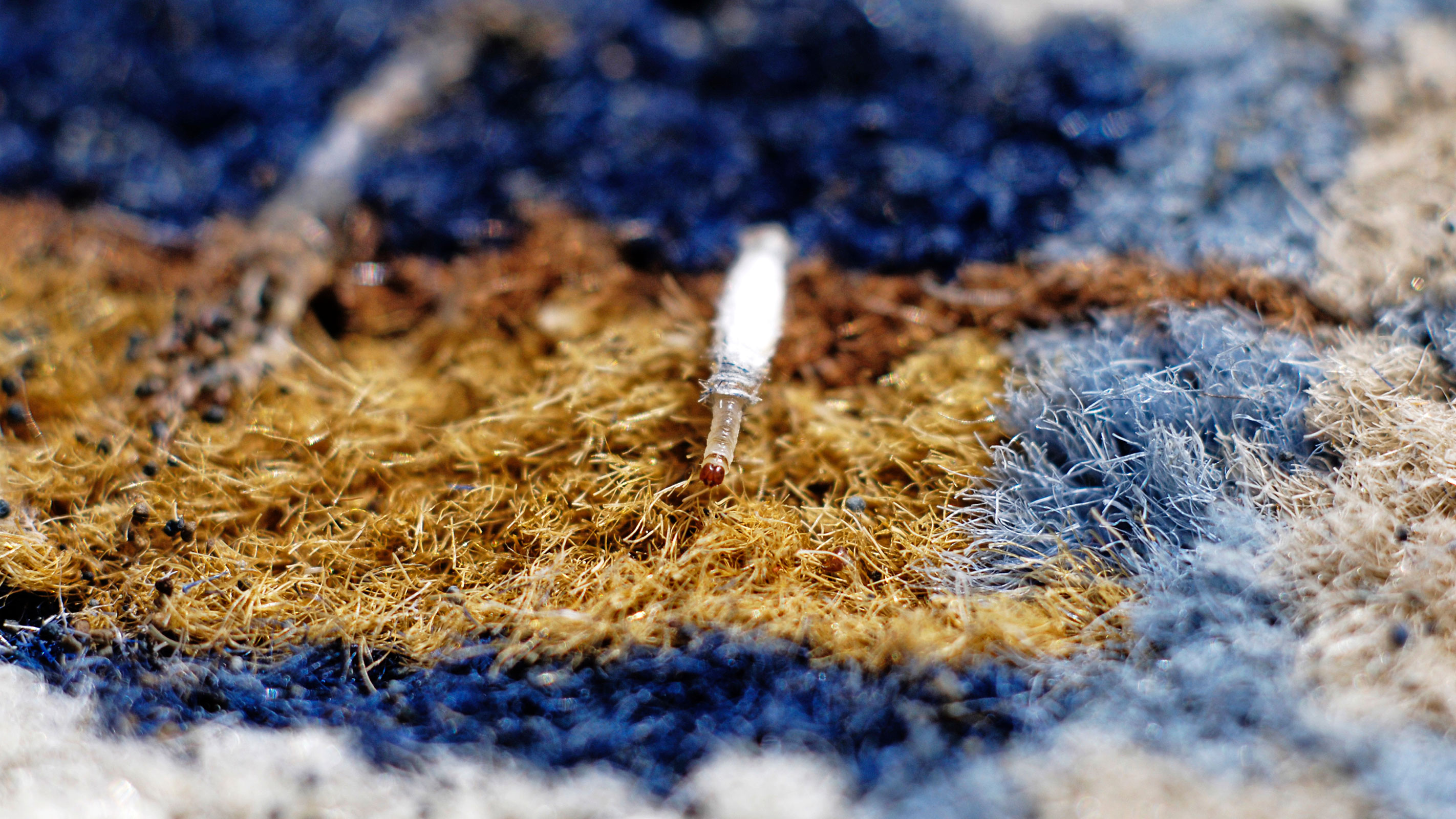
Where should I look for carpet moths?
Carpet moths tend to favour certain conditions and knowing what these are can help in you discovering them early.
"Carpet Moths favour dark areas, with damage often being more evident underneath or behind heavy furniture," say those in the know at MothKiller.co.uk.
"The carpet moth enjoys damp carpets or carpets that have a source of moisture such as spillages or leaks, as the grubs rely on moisture within the carpet to hydrate themselves," explains Merlin Environmental. "If you are searching for carpet moth larvae, look in the low-traffic, carpeted parts of the floor, like under furniture or near walls."
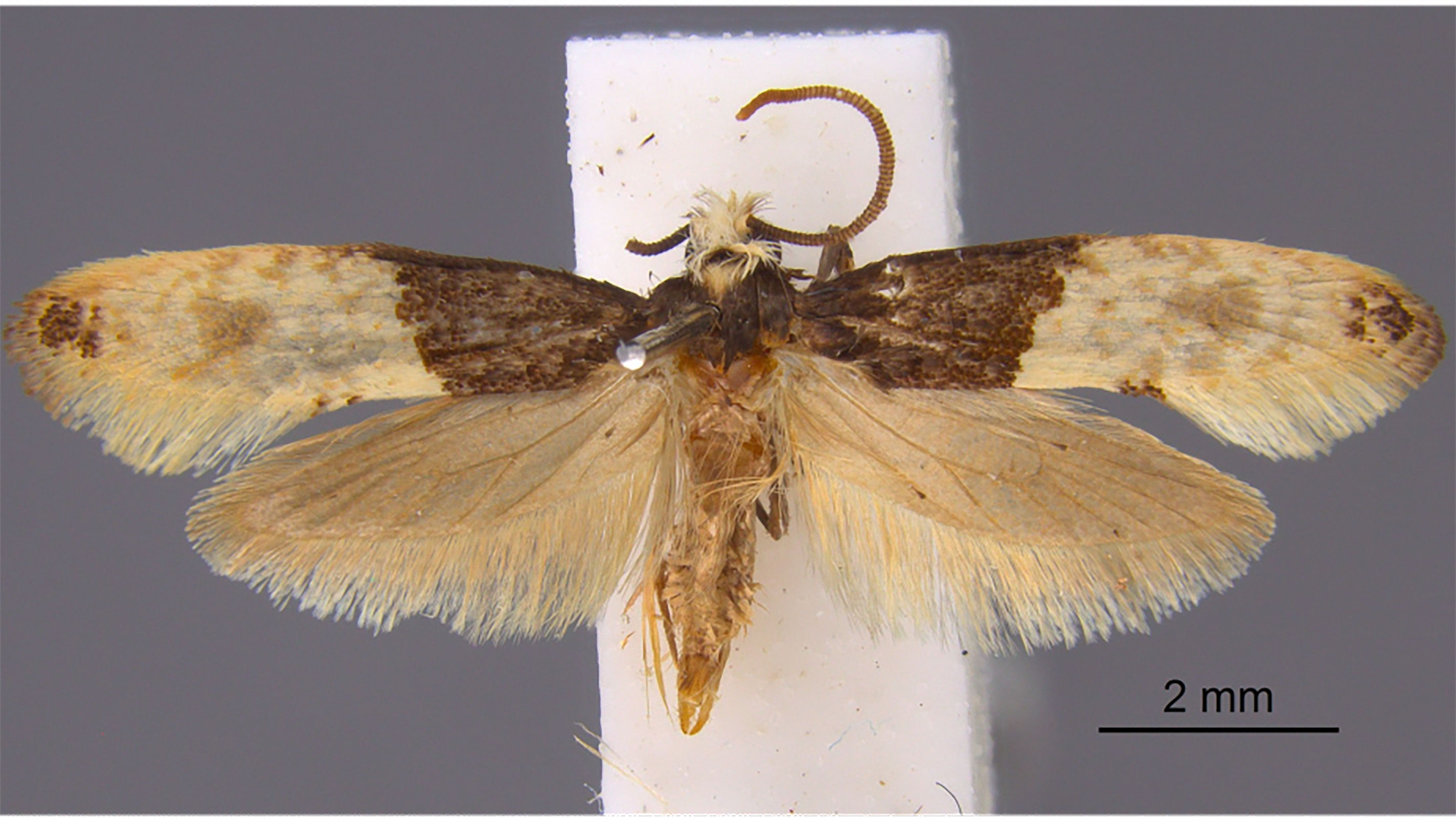
What else could be causing carpet damage?
It isn't only carpet moths that wreak havoc on carpet and rugs – in fact, here in the UK, it is usually another, similar pest – the clothes moth.
That said, identifying and dealing with them is a similar process.
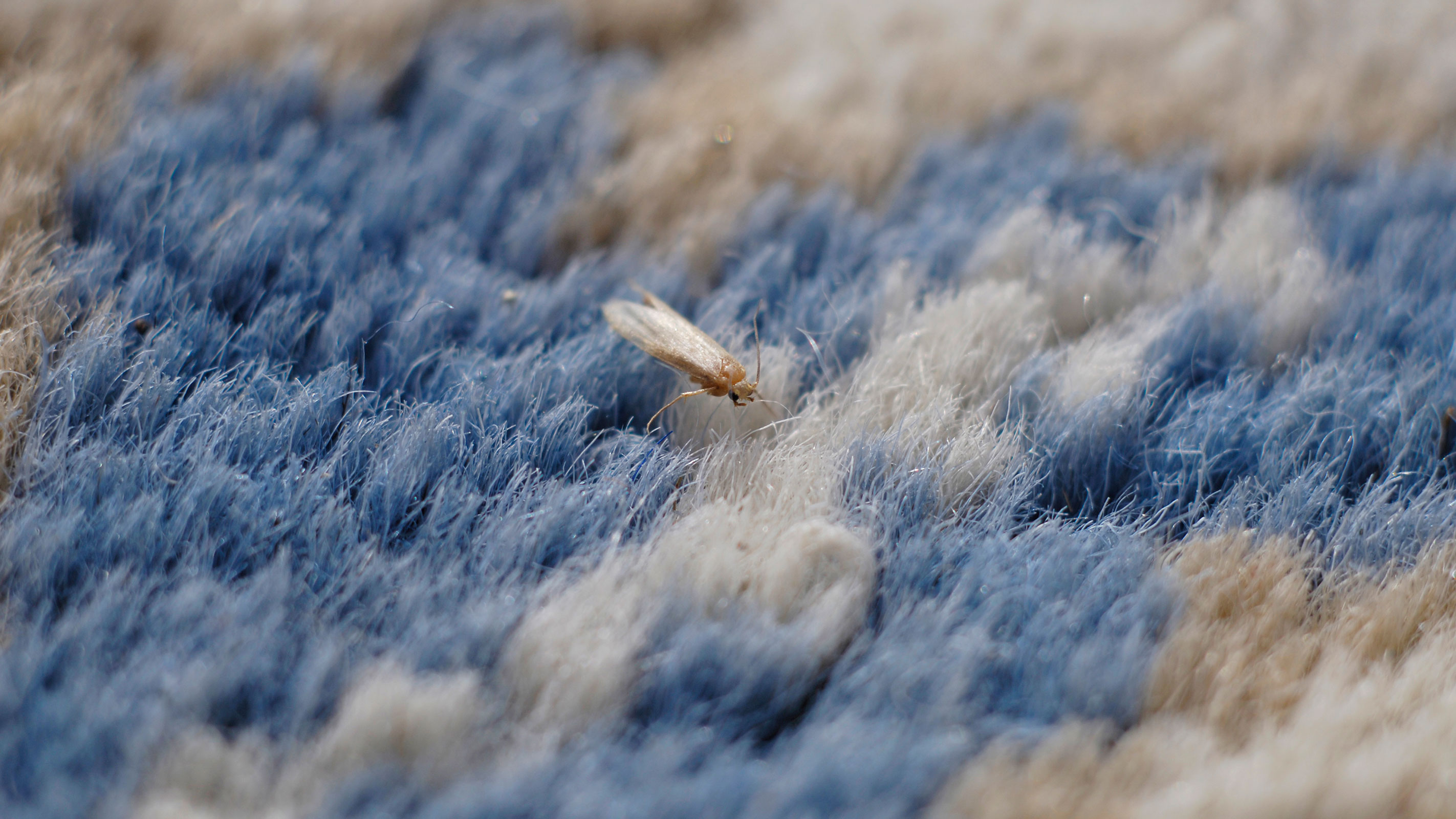
How do you get rid of carpet moths?
If you have discovered carpet moths or clothes moths in your home, you will undoubtedly be looking at the best ways of getting rid of them.
There are several methods you can use, from those that rely on non-chemical solutions to those that involve calling in the experts.
- Get busy with the vacuum: Regularly vacuuming your carpets has to be the simplest and cheapest way of getting rid of carpet moths. This should remove all eggs and larvae – just be sure to be thorough and don't neglect to vacuum under furniture and around the perimeter of the room either.
- Have a good tidy up: It really does pay to keep mess to a minimum – keeping your floor free of too much clutter means you will be able to spot signs of carpet moths sooner.
- Set moth traps: Glue strips and moth traps are a popular way of catching and killing carpet moths and are cheap and simple to use. Try a product such as MANCHESTER MOTHMEN Moth Killer, moth traps featuring adhesive pads that attract the moths thanks to the pheromones they are impregnated with.
- Use an insecticide spray: Specialist carpet moth sprays, available from companies such as MothKiller.co.uk are fast-acting, easy to use and not too pricey.
- Explore the range of moth killing products: As well as sprays, there are a whole other range of specialist products for eliminating moths, including carpet powders and natural sprays, containing no chemicals. Although these natural products are still effective, they tend to take longer to get to work.
- Smoke bombs: Often containing the insecticide permethrin, these little powerhouses are placed in the infected room, with all the windows and doors shut. You light them, let them work for a couple of hours, then return to the room and ventilate it thoroughly. If you are worried about the idea of a naked flame, 'foggers' do a similar thing but rely on an aerosol that releases an insecticidal gas over a couple of minutes.
FAQ
Does vinegar get rid of carpet moths?
This good old household staple can be used for so many things around the home – including deterring carpet and clothes moths.
Some people report great success by placing a bowl of cider vinegar and washing up liquid in the room. The scent of the vinegar attracts the moths and the washing up liquid pulls them under the surface.
Carpet moths can ruin your carpet and if they do it's time to learn how to lay carpet. If you don’t want to lay carpet yourself, find out how much you can expect to pay in our carpet installation costs guide. If your carpet stairs are affected by moths check our best carpet for stairs guide to help you choose your new carpet.
Get the Homebuilding & Renovating Newsletter
Bring your dream home to life with expert advice, how to guides and design inspiration. Sign up for our newsletter and get two free tickets to a Homebuilding & Renovating Show near you.
Natasha was Homebuilding & Renovating’s Associate Content Editor and was a member of the Homebuilding team for over two decades. In her role on Homebuilding & Renovating she imparted her knowledge on a wide range of renovation topics, from window condensation to renovating bathrooms, to removing walls and adding an extension. She continues to write for Homebuilding on these topics, and more. An experienced journalist and renovation expert, she also writes for a number of other homes titles, including Homes & Gardens and Ideal Homes. Over the years Natasha has renovated and carried out a side extension to a Victorian terrace. She is currently living in the rural Edwardian cottage she renovated and extended on a largely DIY basis, living on site for the duration of the project.
